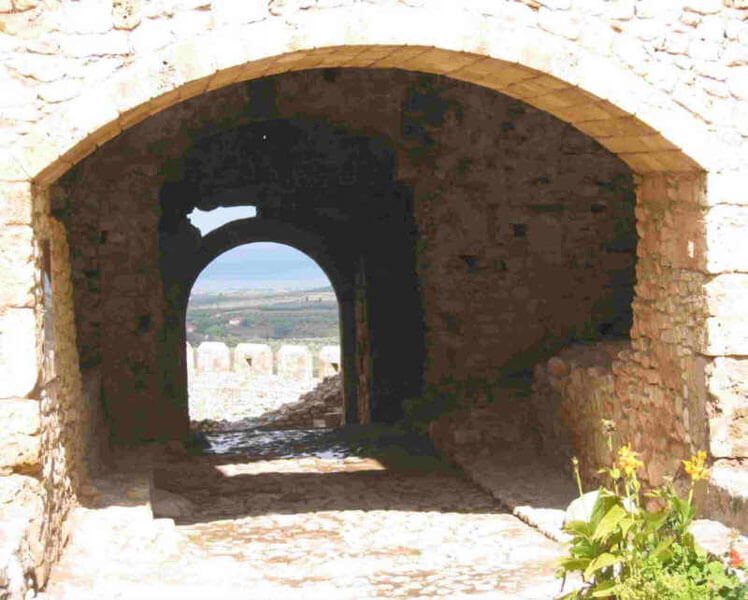
Zwischen Patra und Olympia ist das Kastro Chlemoutsi über dem Ort Kastro die attraktivste Sehenswürdigkeit: eine monumentale Ritterburg in beherrschender Lage über der Halbinsel Kyllini. Ihren Namen Chlemoutsi, zu deutsch ›kleiner Berg‹, soll die Burg aus dem Slawischen haben – er war zugleich damals auch die Bezeichnung für die Halbinsel.
Der Besuch lohnt sich nicht nur wegen der Burg sondern auch wegen der herrlichen Aussicht. Die folgende Information ist dem kleinen Führer welche man am Eingang erhält entnommen.
Chlemoutsi stands on the summit of a hill on the westernmost headland of the Peloponnese. It was build in 1220-1223 by prince Geoffrey I de Villehardouin and was the strongest fortress in the Frankish principate of Achaia.
The castle was built from the outset by the Franks, who called it Clermont, the name becoming Chlemoutsi in Greek. It was later known as Tornese, on the basis of an erroneous assumption that it was the location of the famous mint that issued the tournois coins. The location chosen for the new castle was a strategic site. From the top of it’s hill Chlemoutsi protected the famous commercial port of Glarenza and the capital of the principate, Andravida, and controlled the area that formed the core of the Frankish possessions in the Morea, which enjoyed great prosperity and repute during the time of the Villehardouins.
The troubled period that began with the death of William de Villehardouin and lasted throughout the entire 14th century led to the gradual decline of the Frankish principate and Chlemoutsi became a prize of contention between different nobles. The last descendant of the Villehardouins, Margaret of Akova, was imprisoned and died here, being held responsible for the claims on the Morea made by the Catalans, who captured the castle for a short time in 1315.
At the beginning of the 15th century the castle passed into the possession of Carlo Tocco, count of Kephalonia and despot of Epiros. In 1427 it was acquired peacefully by Konstantinos Palaiologos as result of his marriage to Tocco’s daughter, and was used by him as a military and administrative centre in his preparations for his attack on Patra.
The castle continued to function down to the time of t he Greek National Uprising in 1821, passing through the hands of the Turks (1460-1687, 1715-1821) and the Venetians (1687-1715). Beginning as early as the end of the Frankish period, however, it appears gradually to have lost its important role in the defence of the region. The Greeks and Venetians carried out no work on the castle, while the Turks engaged in only minor projects to reinforce it. Part of the castle suffered major devastation during the bombardment by Ibrahim in 1825. There were no later modifications to the original form of the fortress and Chlemoutsi still retains a distinctly Frankish character; it is one of the most important and best preserved castles in Greece.
The castle consists of two enclosures. The outer enclosure wall is polygonal in shape. Along the course of the enceinte are preserved building remains that belong to the original construction of the 13th century and inside it survive traces of a number of structures, the best executed of which is a Turkish mosque.
The work undertaken in the Turkish period is responsible for the present form of the main entrance, the battlements, and the three towers on the west side of the enclosure. At the southeast edge of this rises the hexagonal interior enclosure, which consists of a row of vaulted rooms set around a large central courtyard. Most of these rooms originally had two storeys and were heated by hearths of a form similar to those in the buildings in the outer enclosure. Morphological features such as the tall, semi elliptical domes over the rooms and the segmental or slightly pointed arches over the doors and windows attest to the western origins of the builders of the castle.













|I was recommended Chlemoutsi | KK4YOU by my cousin. I am no longer sure whether or not this post is written by them as no one else recognises such specific for my issue. You are incredible! Thanks!